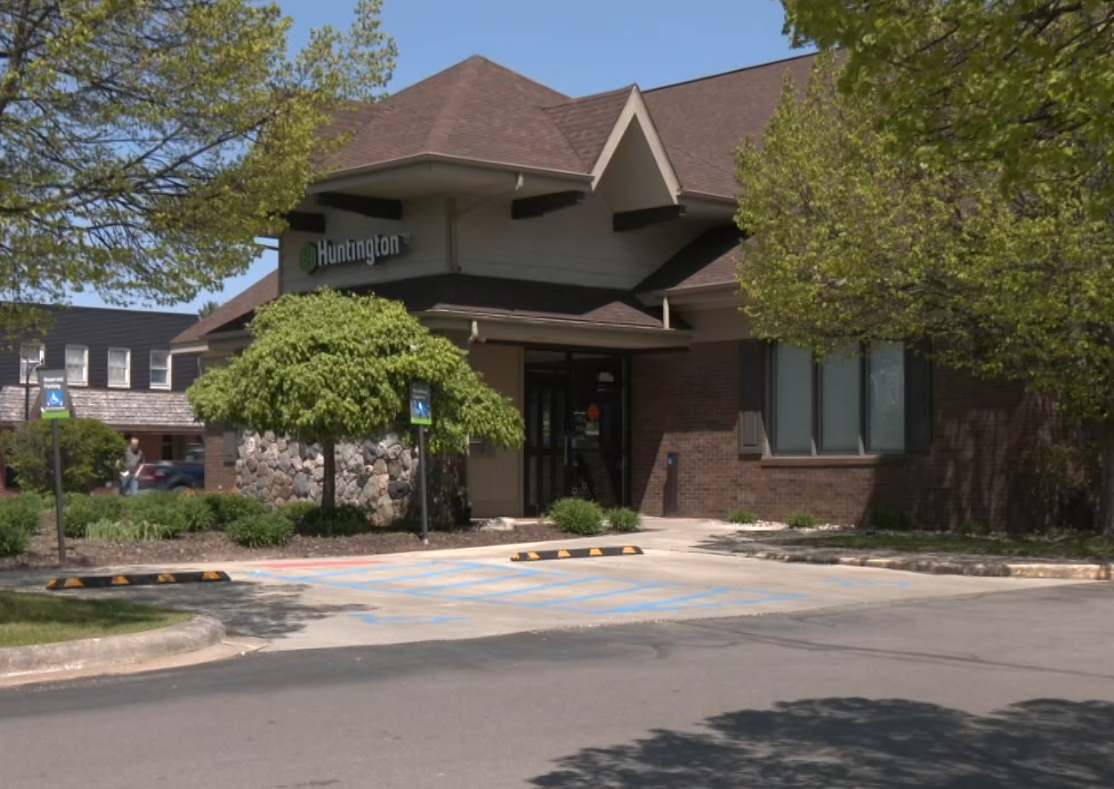An arm assisted robot, Mako, is the newest technology at Munson Medical Center in Traverse City.
“I leave the operating room much more confidently doing a robotic surgery,” said Dr. Joseph Ward.
Mako is a tool designed to help surgeons with knee and hip surgeries without taking away the surgeon themselves.
“[Its] basically like a fancy saw that’s connected to a map of the patient’s bone and their anatomy,” said Dr. Ward. “The role of the surgeon is still very important. The surgeon is making the incision. The surgeon is doing the exposure...The surgeon is making the plan and making really important decisions that are based on their experience.”
Cameras in the operating room help create a 3-D map of the patient’s knee, with pins in the bone showing up as points on the screen. The surgeon can then touch the screen to see where and what to shave or cut down.
“We’ve registered the bone to create a very accurate map, and then we have a tracker that goes with the saw blade,” said Dr. Ward. “The saw communicates with our registered bone so we can resect bone exactly where we want to and in exactly the orientation that we want to in all three dimensions.”
Dr. Ward said the advancement Mako brings to surgery is like going from paper maps to a GPS system. Those advancements come with a lot of training.
“I observed two surgeons. I went and saw two live surgeries done with the robot with both hips and knees. And I did two different cadaver sessions, operating on a real person who’s not alive anymore...making sure that I was comfortable. In addition to that, there are apps that you can use on your phone or your computer to kind of do virtual cases,” said Dr. Ward.
While the new technology hasn’t been proven more successful than tradition surgery yet, Dr. Ward said he doesn’t think he could achieve the same results without it.
“I actually feel like I’m a lot better surgeon using this technology, having done a lot of knee replacements without it. Because not only do I know what a knee, in my opinion, should feel like to have an acceptable result, but I know where maybe the gaps in my abilities were with manual instrumentation,” said Dr. Ward.
Robotic surgery also provides safety measure that surgeons wouldn’t have with traditional tools. Mako’s saw blade will stop cutting if it goes beyond the mapped out section that’s supposed to be cut.
“You feel a little bit safer that your saw is not going to go into the back of the knee and cut a critical artery or a nerve...because it recognizes that it’s not going into the mapped location,” said Dr. Ward.
He added that while he’s seen an improvement with robotic surgery, some patients may need manual surgery done due to medical reasons or personal preference.
“You consider the patient’s bone quality, you consider the deformity that their knee has,” said Dr. Ward. “You can basically do most anyone’s knee replacement with a robot. It’s just, sometimes [it] may not be the best thing if somebody has really poor bone quality. These pins need to be rigidly fixed and stable throughout the surgery.”
Elderly patients or those with osteoporosis might consider a more traditional route.
“It’s not an assembly line where everybody gets the same thing. I try to really give personalized care. The robots are one part of that, but just getting to know each patient’s needs, getting to know what their goals are and how we can achieve them,” said Dr. Ward. He advices patients to ask their doctor or surgeon what’s right for them.
As technology progresses, Dr. Ward said it’s important for doctors to be trained in traditional as well as robotic surgery, so they’re ready for anything.
“We had the robot malfunction one day, and it just needed a replacement part. So I took the manual cutting guide and I applied it and I did what I always do,” said Dr. Ward. “I made the one remaining cut that was left to do. And that patient’s actually signed up again for her second, other knee in the spring.”
Dr. Ward said at the end of the day, Mako and other robots or computer programs are just a tool. It’s how the surgeon uses those tools that matters.
“I had a patient that I can remember very well who, before her surgery, had a lot of anxiety. She gave me this kind of Hallmark card that said ‘Measure twice, cut once.’ I think about that a lot,” said Dr. Ward. “You can plan it ahead of time, three or four days before surgery based on the CT. Then you can get in the operating room and fine tune your plan, and then you can execute it.”
You can expect to see this technology, also used for hip replacement surgeries, in more and more hospitals as time goes on.
“The Cleveland Clinic, the Mayo Clinic, New England Baptist where I did my fellowship, they have all come on to this...The Cleveland Clinic just published that they’ve finished their 10,000th robotic joint replacement,” said Dr. Ward. “The consensus is that it’s here to stay, that a quarter of the joint replacements in the U.S. will be done with robots by 2025 and two-thirds by 2030.”
You can learn more about Mako Robotic-Arm Assisted Technology by Stryker here.


